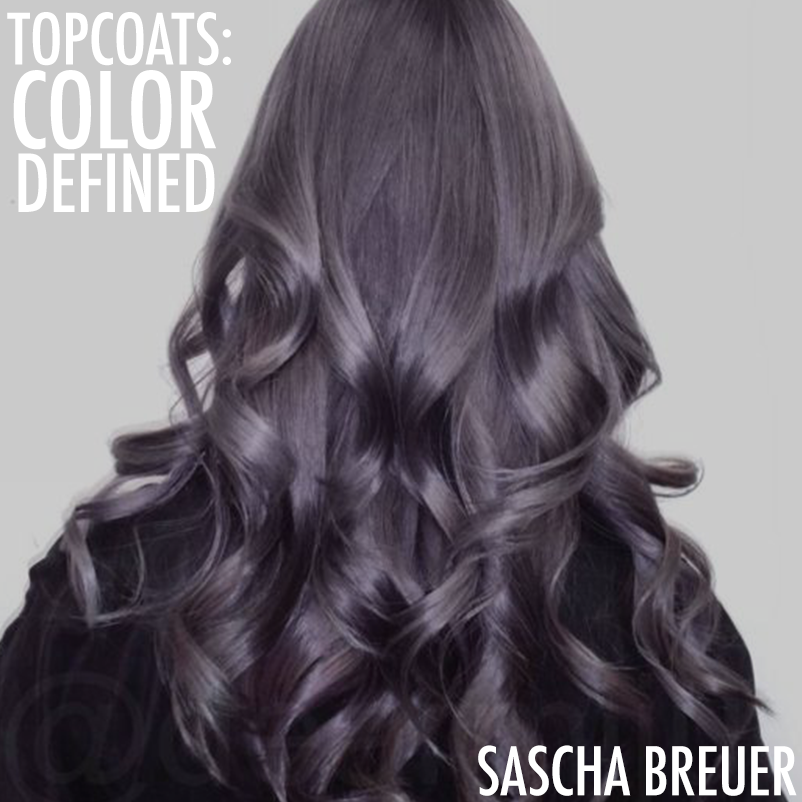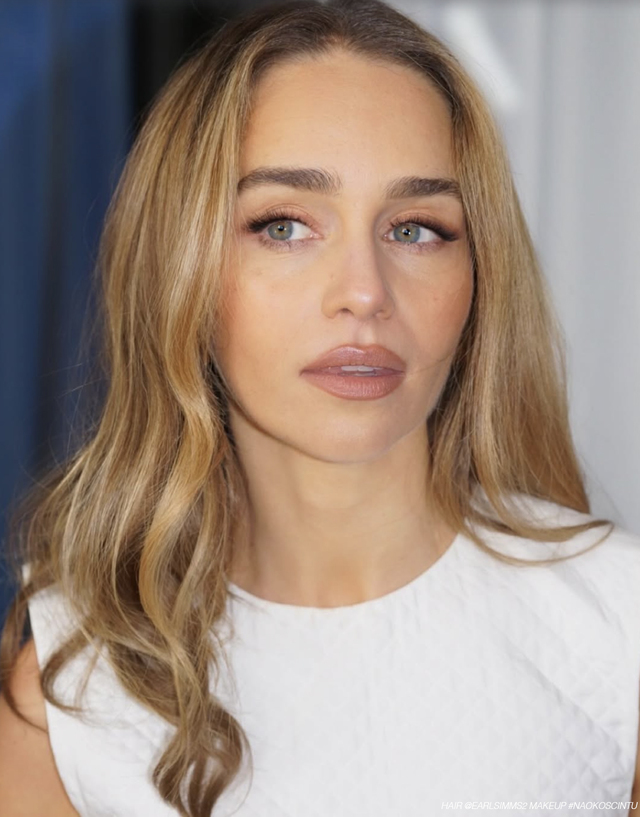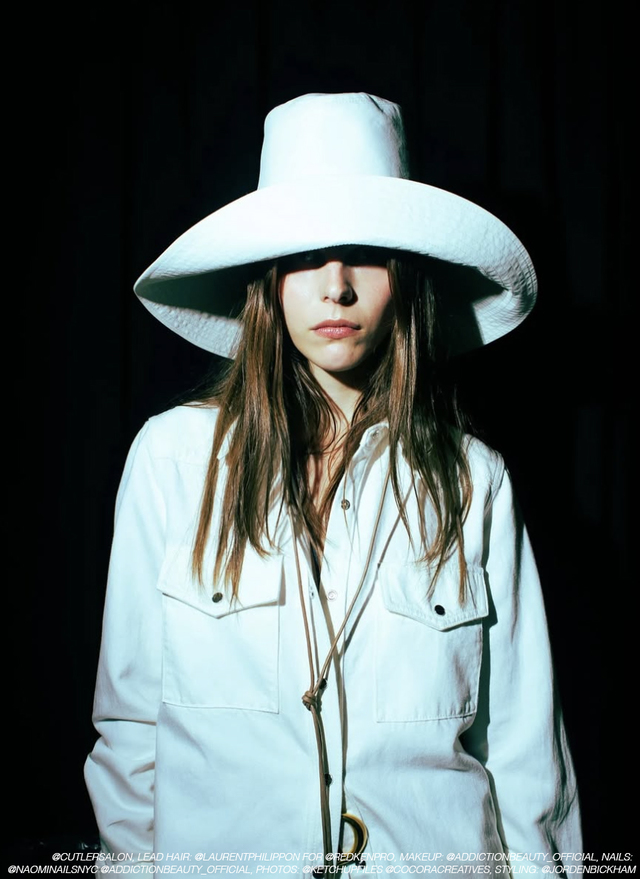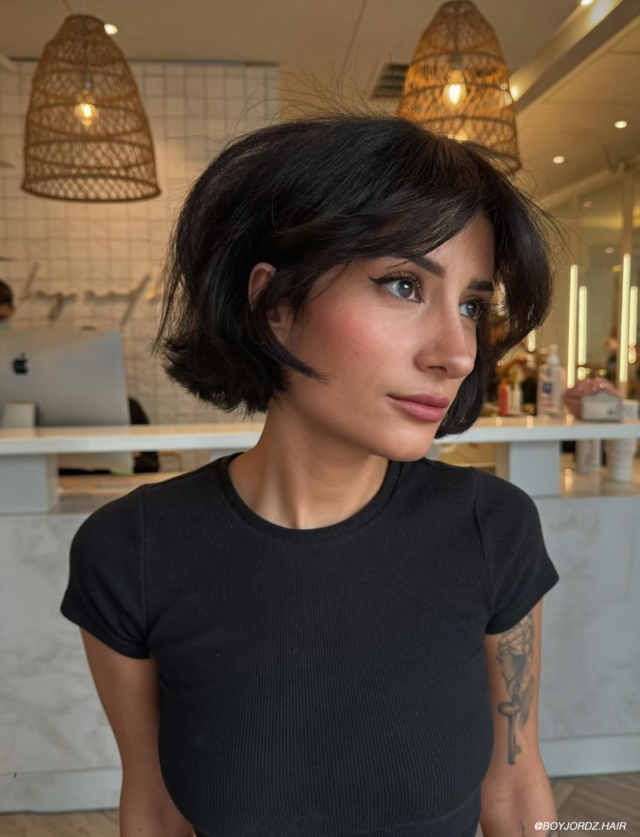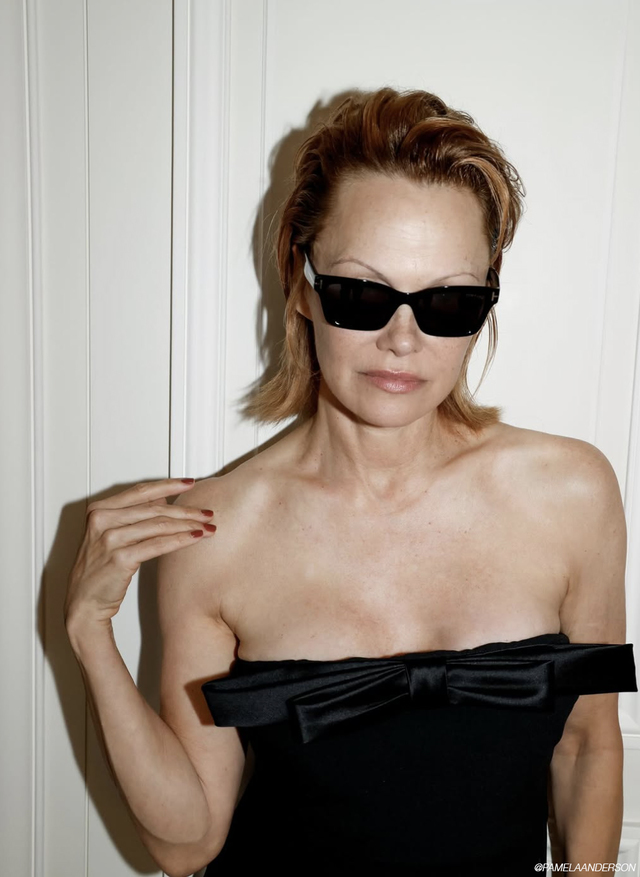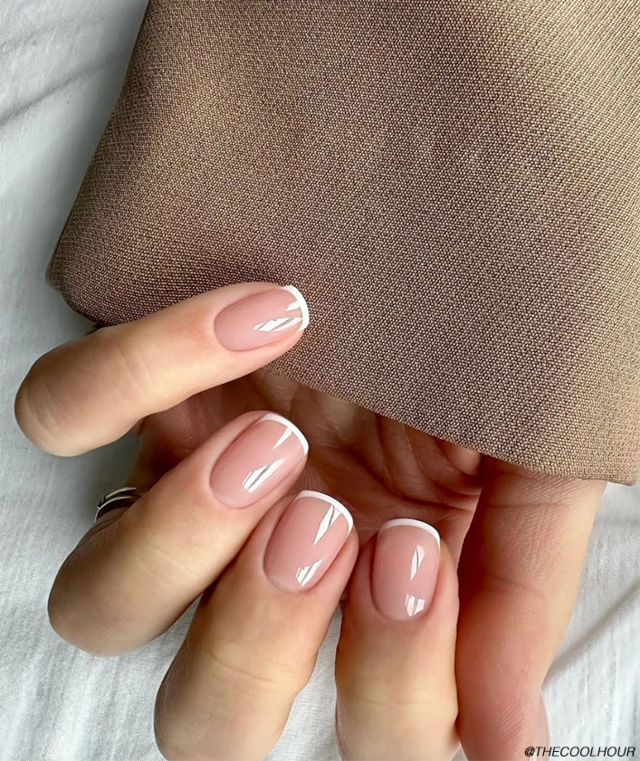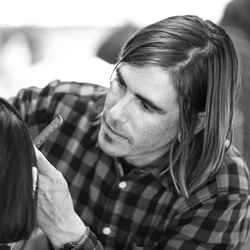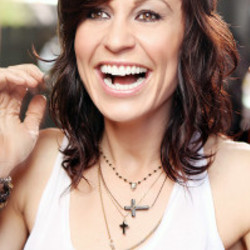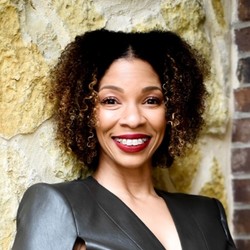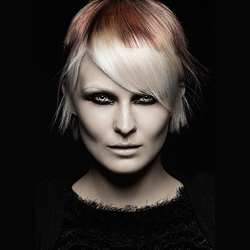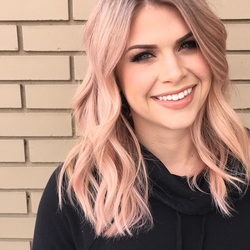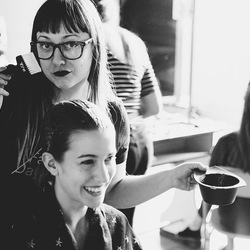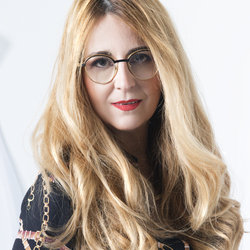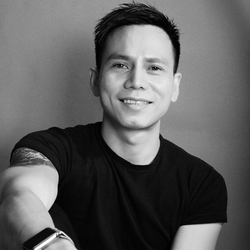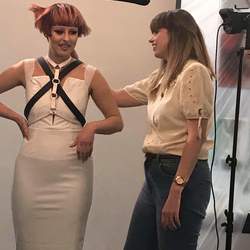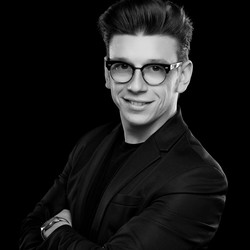Post courtesy of Sascha Breuer
We talk a great deal about hair color around here and it got me thinking: while dyeing is undoubtedly the most popular technique, there are other ways to experiment with hair colors, finishes and effects without picking up permanent pigments. Have you heard of topcoats yet? They’re ideal for playing with hair texture and finish (and even flirting with some peekaboo color) and are a really neat way of adding dimension and tonality to your hair without making a drastic change.
A great way to understand how topcoats work is to think of them as filters for your hair: the base remains the same and peeks through beautifully, but there’s just a little extra magic going on to warrant a second look. There are two dimensions to using hair topcoats: texture and tint. You can use a hair topcoat to affect the texture and finish of your locks or you can use it to introduce a sheer wash of color, or, of course, you can go in for both. Hair topcoats entered mainstream styling last summer and have been picking up steam since; Wella offers a range of in-salon services termed Color Touch Instamatic that’s just the thing if you’re after a diffused, glowing-from-within smoky pastel finish and there are tons of other variants to choose from as well.
If you like the sound of hair topcoats, here are a couple of things you can do with them and great pointers to get the most out of your next salon visit!
#1 Try A New Texture
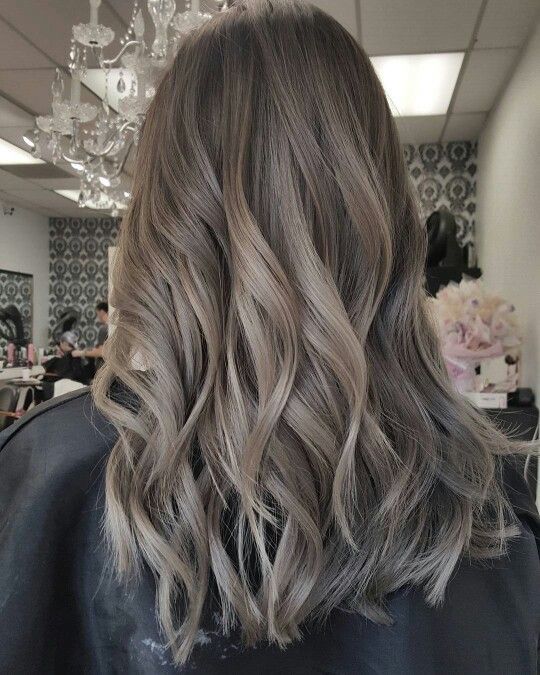
Since hair dyes are pretty much the go-to for anyone wanting to experiment with hair color, topcoats are primarily used to play around with texture. If you’re craving a new finish, topcoats are just the thing. Go sophisticated with a powerful matte to compliment the coming cold months; the vibe is bold and the mood is dark. If you want something livelier, with perhaps just a little friskiness to it, I recommend the pearlescent finishes; think rippling water, light bouncing off dusty windowpanes and shimmering sands: this effect is all about movement, dynamism and tonality. There has been talk of metallic topcoats making their way into the mainstream as well, and I for one cannot wait to see stronger finishes with reflective properties burst out onto the scene. Wouldn’t chrome-plated locks be totally rad?
#2 Soft, Sheer Color
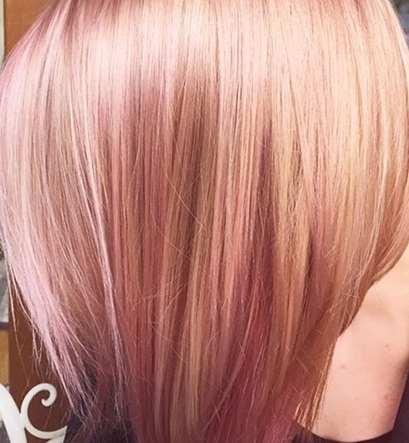
If you’ve been eyeing all the gorgeous hair color trends we’ve seen over the last couple of seasons but they seem a bit much (and let’s be honest: going to work with rainbow hair or mermaid hair is not easy) use topcoats to add just a hint of color to your tresses. Think of it as looking at your hair through tinted glasses: it’s just a translucent wash of your chosen color, which lets your base show through but also amps it up considerably. Now you can rock rose-tinted locks or shimmery opal strands without carrying heavy color.
#3 Tweak Trends
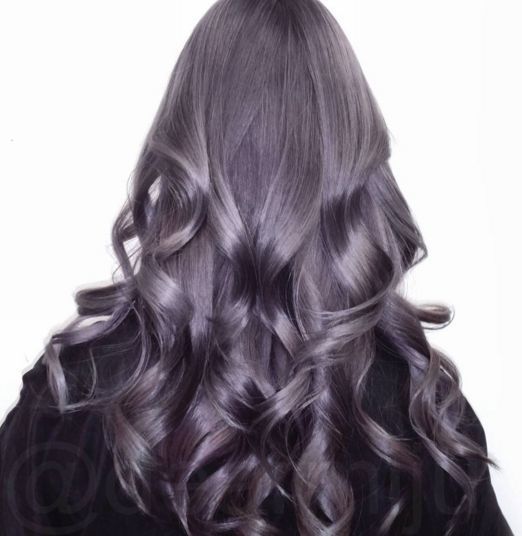
Now, what can you do with topcoats? The short answer? Anything! Pick any hair color trend that’s caught your eye and know that it can be adapted with a topcoat. You can use a topcoat to add just a subtle pop to your current base or you can get your base dyed and then layered with your topcoat for an extra punch. Really, it’s about having a vision and slowly building towards it.
There are no rules to what you can and can’t do with topcoats. If you’re sporting a fairly conventional base color (or are sticking to your natural color) a topcoat can be a great way to mattify or gloss up your look, or to introduce a barely-there rinse of color, like we’ve discussed. If you want to combine topcoats with more interesting bases or hot color trends, meet your colorist to discuss some ideas. A topcoat can be a great way to diffuse an outrageous base: for instance, if you’re loving those pastel shades but bubblegum pink hair just doesn’t cut it at the workplace, you can flaunt a more sophisticated blush-colored tint thanks to this coloring process. For the winter months, consider warming up your look with richer topcoats: think toasty chestnuts, spun golds and rum on a fire.
#4 Work Backwards From The End
As is the case with most hair trends and hairstyles, when you decide to go in for a topcoat, you have to work backwards from the final look that you’re after. While creating a particular hairstyle is all about the meticulous journey from inspiration to inception, you need to have a very clear idea of where you’re going. Because hair topcoats, glazes and glosses are an almost alchemic process of mixing, laying and layering, your colorist needs to have an accurate impression of your expectations. You might want that ‘mermaid-like finish’ or ‘pastel pop sheen’ but there are no one-stop box formulas here. Pick your colors, tones, effects and the overall mood and explain the same to your colorist in no uncertain terms.
#5 Don’t Overlook The Base-ics
Be prepared to switch up your base color if you’re aiming for a very specific result if your current dye or natural color doesn’t work for the look. Think of it as a chemical equation: you’ve got some variables that all add up together and combine to create a very specific reaction and if a particular ingredient doesn’t work, the entire experiment is going to fall apart. Your colorist might advise you to lighten, darken or completely change your base and there’s a good reason for the same: the topcoat is, after all, a final touch added to an existing base. It’s the last layer but before you get to it, everything else needs to be in place. And the final result depends heavily on how the topcoat works with the existing base: the same topcoat can look completely new when moved from light to dark hair.
Topcoat application tends to follow a pretty standard procedure: the base is readied first, and this can involve only prepping your hair if you’re not changing colors and if you are, it involves first dyeing the base; then the topcoat is layered on; and finally the hair is set into a style. You will want to tell your stylist just how you want your hair to look at the end because that will help them figure out how the base needs to be prepped. For instance, if you’ve got dark hair right now and you want a tonal, opalescent topcoat added, your base might need to be lightened for the topcoat to even show through. In the same vein, pastel topcoats and pearl-like finishes might not work in black/dark brunette hair. Or, for that matter, if you want to wear your hair pale and light but with a matte finish, your stylist might warn you against flatly applying an ashy topcoat because doing o will affect the shine but will also reflect less light, thereby leaving your hair looking much, much darker than you envisioned.
I recommend having fun with topcoats, but the most important tip I can give you here –and any stylist worth their name will agree– is to go to a pro and set aside that DIY instinct just this once. Given that topcoats make for softer results than regular dyes and the actual application itself only takes a couple of minutes, most people believe that topcoats are a lesser version of hair dyes, which couldn’t be farther from the truth. Getting a topcoat right involves several steps and much technical expertise, from knowing how to mix colors and glazes to layering them with exacting precision. Expert knowledge of how light and colors work and mix together is also integral to the process: a pro colorist will know the sort of colors that are needed to mattify or boost shine and how the chosen substances will react with certain bases and what’s needed to neutralize some tones while emphasizing others and you really can’t replicate the effects at home without the right knowledge.
Book an appointment with your stylist today and remember to bring photos of your desired style and fashion inspirations along; experimenting with wild hair color just got a whole lot easier.
This post was courtesy of Sascha Breuer, be sure to check out his fabulous blog SaschaBreuer.com and his amazing uploads and travels on Instagram @Sascha_Breuer.
